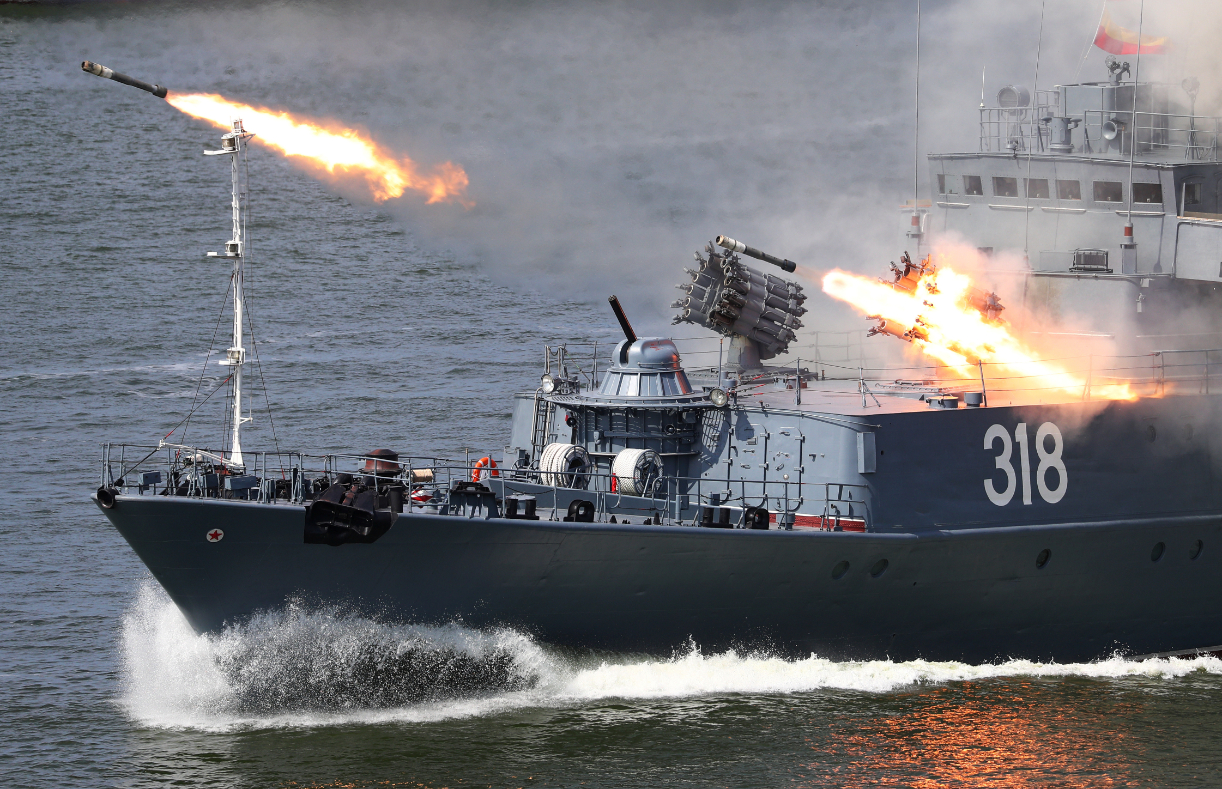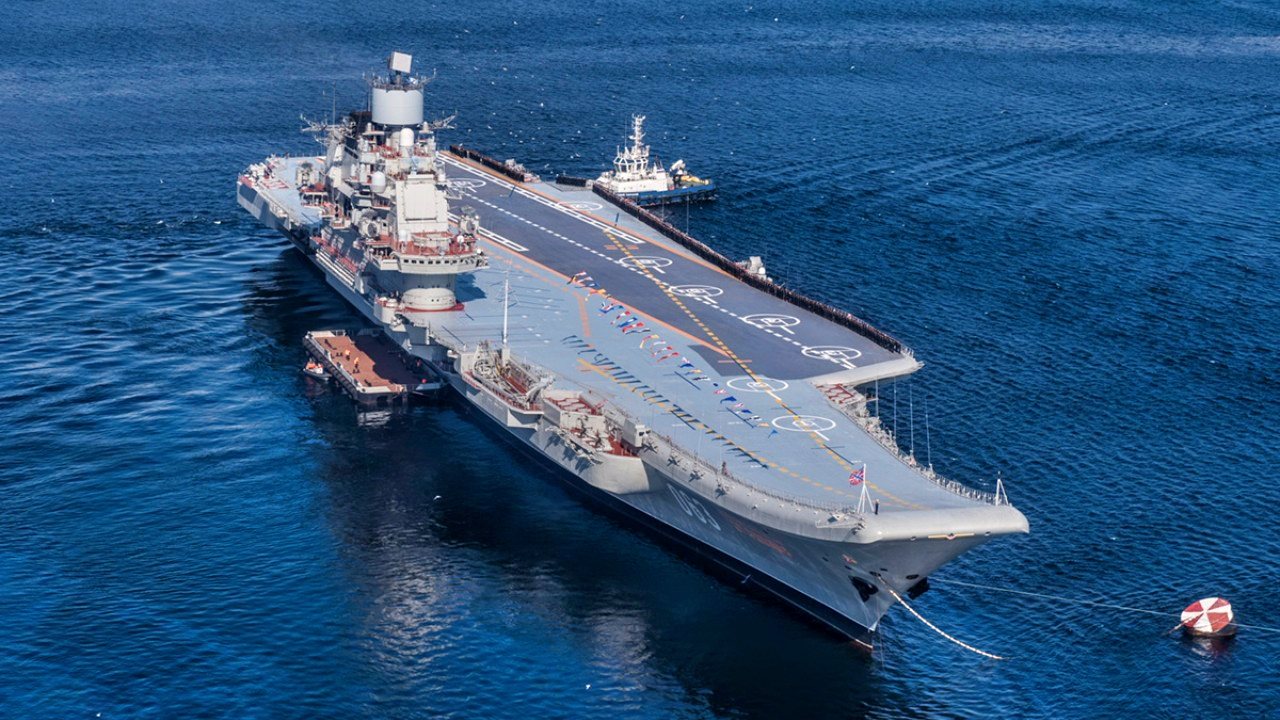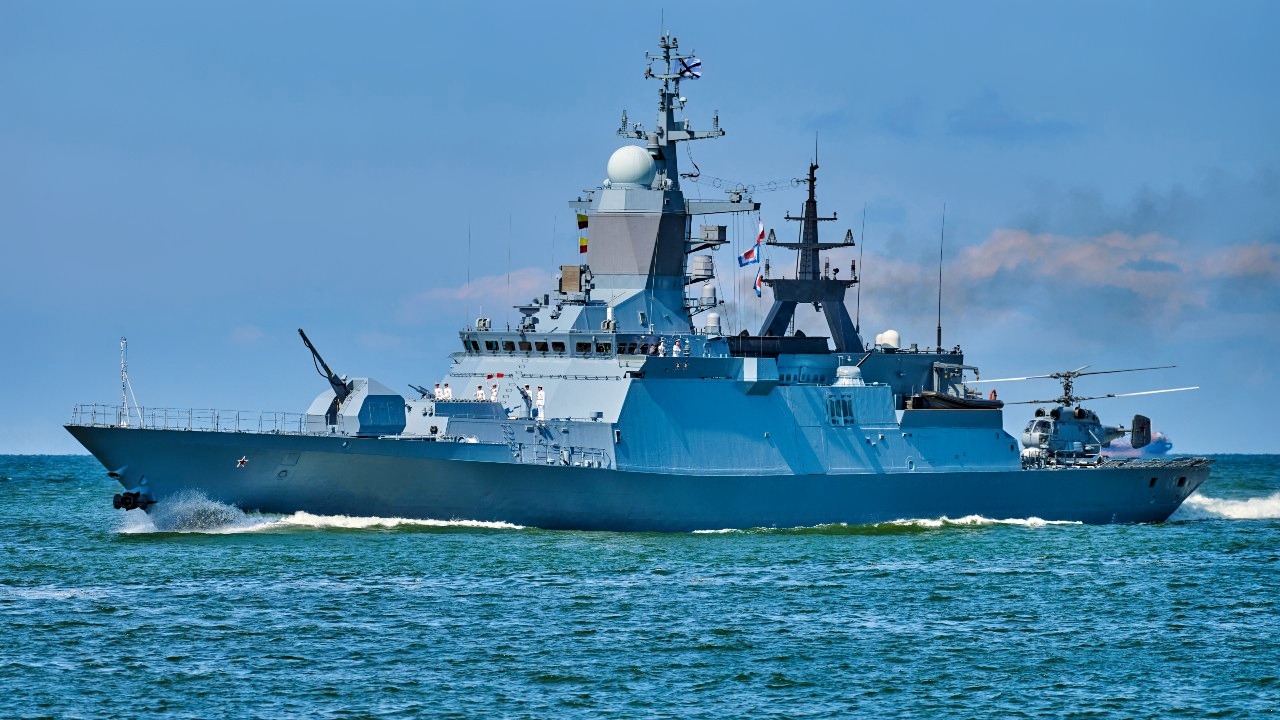The Russian Navy Is 'Sinking' Real Fast
Russia's navy has suffered significant losses during the invasion of Ukraine, with Ukrainian officials claiming that one-third of Russia's Black Sea fleet has been sunk or disabled.
Summary: Russia's navy has suffered significant losses during the invasion of Ukraine, with Ukrainian officials claiming that one-third of Russia's Black Sea fleet has been sunk or disabled.

-This diminishes Russia's naval presence around Crimea, crucial for securing Ukraine's grain exports.
-Despite the setbacks and international sanctions, Russia plans to develop 50 new warships by the end of 2024, including submarines, corvettes, frigates, and missile ships.
-These efforts aim to replace lost ships and bolster naval capabilities.
-However, the effectiveness of this naval build-up remains uncertain, given ongoing Ukrainian attacks and economic challenges.
Can Russia's Navy Recover After Heavy Losses in Ukraine?
Russia’s navy might be the military branch hit hardest over the course of the country’s invasion of Ukraine. Earlier this year, Ukrainian officials claimed that its forces had sunk or disabled one-third of all Russian Black Sea warships since February 2022.
Challenging the Kremlin’s naval superiority is essential for Kyiv, since disabling Russia’s presence around occupied Crimea helps secure grain exports and other shipments from Black Sea ports.
After such heavy losses, can Russia’s navy ever make a comeback?
Russian Outlets Claim 50 New Warships Are Being Developed
With Moscow prioritizing frontline combat in Ukraine, naval production has been very limited. International sanctions imposed on the Kremlin have further worsened Russia’s economic standing. Despite these issues, Russia is planning to procure roughly 50 warships and support vessels by the end of 2024, according to Deputy Minister of Industry and Trade Viktor Yevtukhov. Russian state-run news outlets claim that as part of this purchase, its navy will receive a combination of submarines, corvettes, frigates, and small missile ships.

"We have reached 100-percent import substitution in the construction of ships for the Russian Navy. No sanctions can affect the construction and commissioning of warships today," Yevtukhov told reporters this week, TASS reported.
Import substitution industrialization (ISI) is a policy more commonly used by developing nations wanting to spearhead domestic development and create self-sufficient internal markets, as detailed by analyst Peter Suciu. The Kremlin is using ISI to circumvent the heavy sanctions the international community imposed on Russia.
As part of this naval build-up, Moscow is developing large patrol ships dubbed Project 22160 vessels. Designed to monitor and protect other ships in open and closed seas, these ships are needed to save Moscow’s remaining naval vessels in the Black Sea from Ukrainian-launched attacks.

Armed with the AK-176 dual-purpose naval gun and Kalibr-NK cruise missiles, Project 22160 warships are well equipped on paper. However, Ukrainian officials claimed to have sunk one such ship as it operated in the Black Sea this spring. The future Project 22160 ships under development in Russia will likely be fitted with more advanced armaments to better thwart Ukraine’s weapons.
While the addition of these patrol boats and of other warships and support ships will certainly aid Moscow’s suffering fleet, the Russian Navy is far from claiming a comeback.
About the Author: Maya Carlin
Maya Carlin, National Security Writer with The National Interest, is an analyst with the Center for Security Policy and a former Anna Sobol Levy Fellow at IDC Herzliya in Israel. She has by-lines in many publications, including The National Interest, Jerusalem Post, and Times of Israel. You can follow her on Twitter: @MayaCarlin.
All images are Creative Commons.


